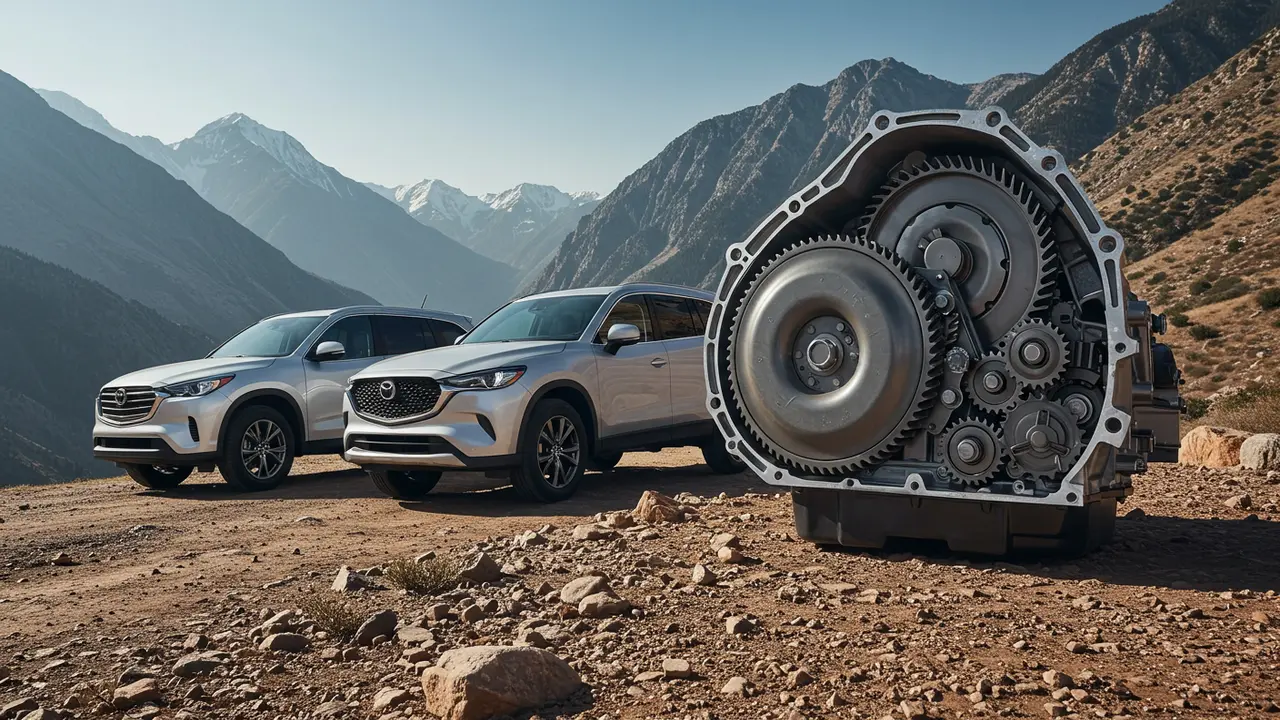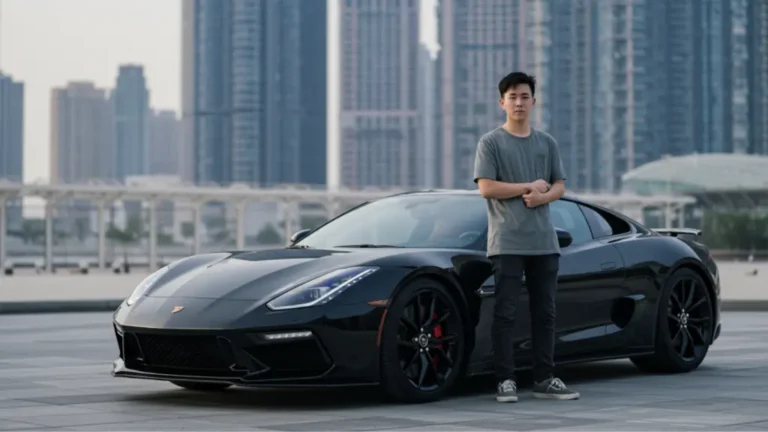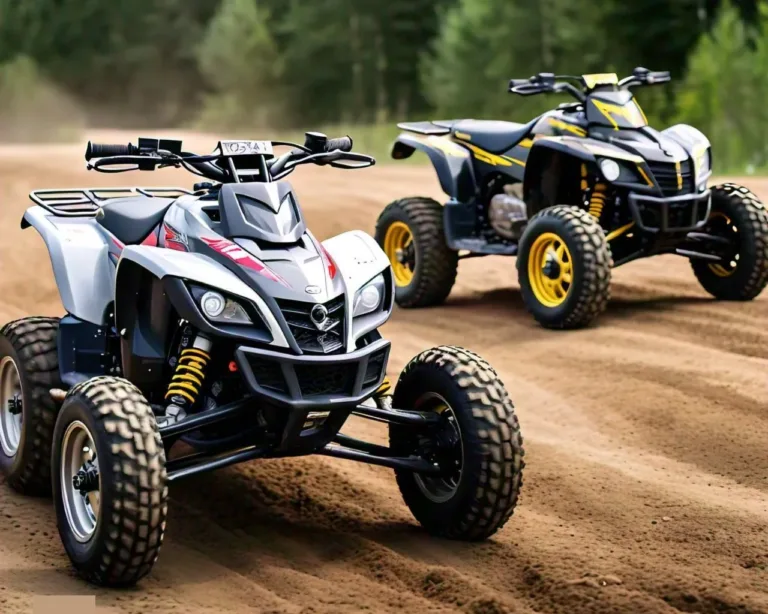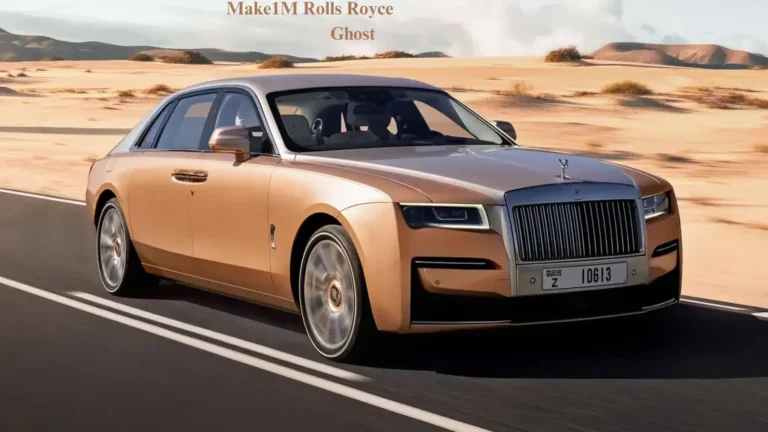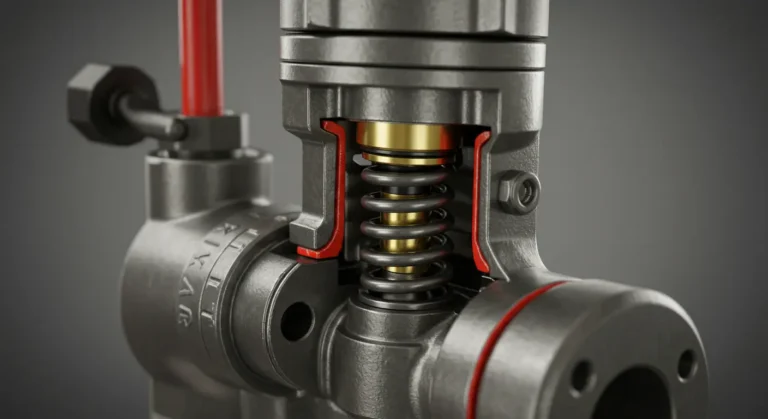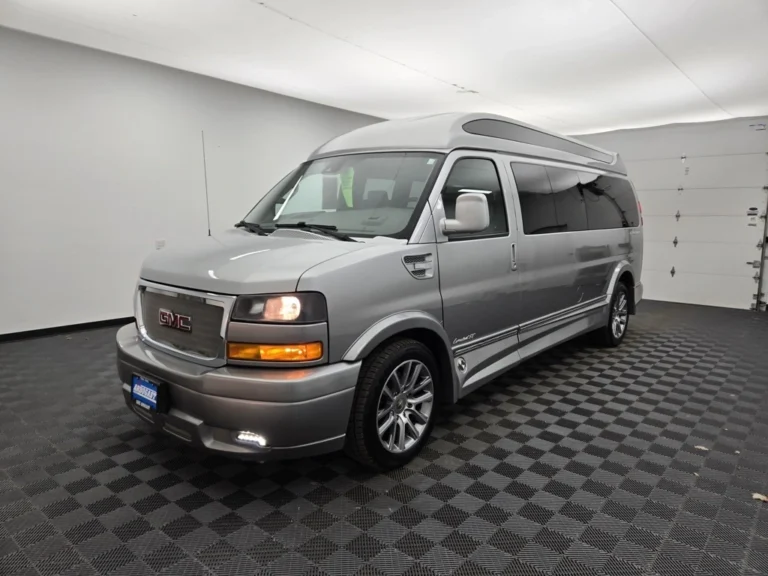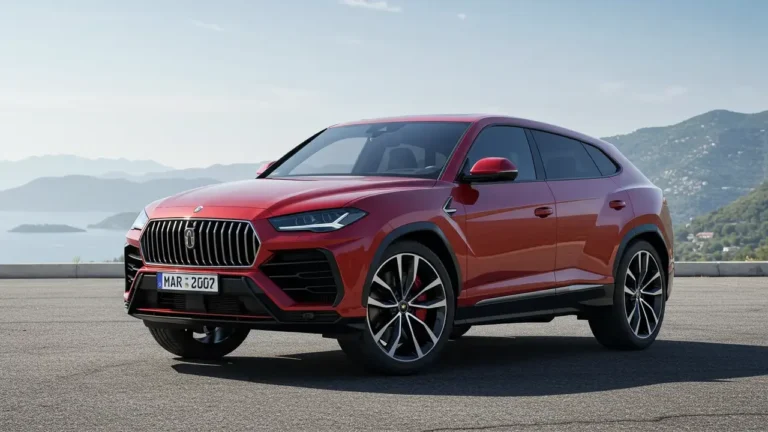Best SUV Without CVT Transmission: Reliable and Durable Models
Not all SUVs are built the same. Some offer a direct, responsive driving experience, while others rely on transmissions that feel less engaging. Many drivers prefer traditional automatic transmissions over Continuously Variable Transmissions (CVTs) due to their durability, performance, and lower maintenance costs.
So, what are the best SUVs without a CVT? Models like the Toyota RAV4, Ford Bronco, Jeep Wrangler, and Mazda CX-5 come with 6-speed, 8-speed, or 10-speed automatic transmissions, offering better power delivery, towing capacity, and reliability. These SUVs provide a driving experience that feels more connected to the road, making them a preferred choice for those who value performance.
CVTs are often avoided because they lack physical gear and instead use a belt or pulley system. Over time, these components can wear out faster than traditional transmissions, leading to expensive repairs and inconsistent acceleration performance. Standard automatics, on the other hand, provide better longevity and a more predictable response when shifting gears.
This guide will cover why traditional automatic SUVs are preferred, the best models available, and which one suits different driving needs. Whether the focus is on off-roading, city driving, or long-term reliability, choosing the right transmission makes a significant difference.
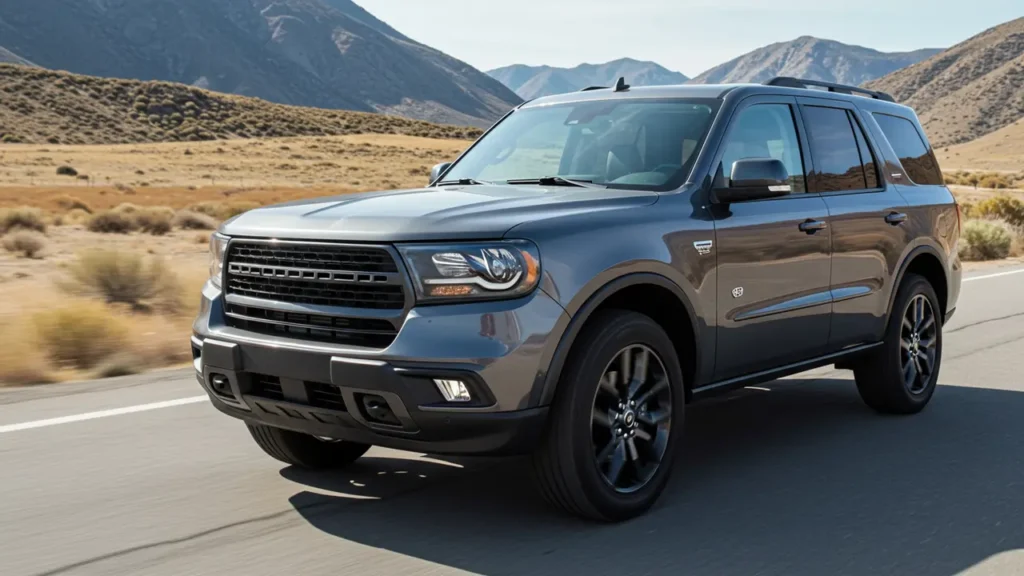
What is a CVT and Why do Some Buyers Avoid It?
A Continuously Variable Transmission (CVT) is a type of automatic transmission that doesn’t use traditional gears. Instead, it relies on a belt-and-pulley system to adjust power delivery smoothly. This design allows for seamless acceleration without the noticeable gear shifts of a standard automatic.
Despite its efficiency, many buyers actively avoid CVTs for several reasons:
1. Reliability Concerns
Traditional automatics use fixed gears, which distribute wear evenly over time. CVTs, however, depend on belts or pulleys that are constantly adjusting, leading to faster wear and potential failure. In some cases, CVTs fail before 100,000 miles, while a well-maintained torque converter automatic can last much longer.
2. Expensive Repairs
Replacing a failed CVT is costly. Unlike traditional automatics that can often be rebuilt, many CVTs require a complete replacement, which can cost anywhere from $3,000 to $7,000, depending on the model. Manufacturers like Nissan and Subaru have faced frequent complaints about CVT reliability, adding to consumer skepticism.
3. Driving Experience
Many drivers prefer the feel of a traditional automatic because it delivers predictable power and response. A CVT can sometimes make an engine feel disconnected from the road, especially during hard acceleration. Instead of distinct gear shifts, CVTs create a rubbery, stretched-out acceleration effect, which some find unpleasant.
4. Limited Towing Capacity
For those who need an SUV for towing, a CVT is often a weak point. Traditional automatics handle higher torque loads better, making them the preferred choice for SUVs like the Ford Bronco, Jeep Wrangler, and Toyota Highlander. CVTs are rarely found in vehicles designed for off-roading or heavy-duty use.
5. Long-Term Ownership Costs
While CVTs can provide slightly better fuel efficiency, their long-term costs often outweigh the benefits. Many automakers have extended warranties on CVTs due to frequent failures, but once the warranty expires, the repair bills can be significant.
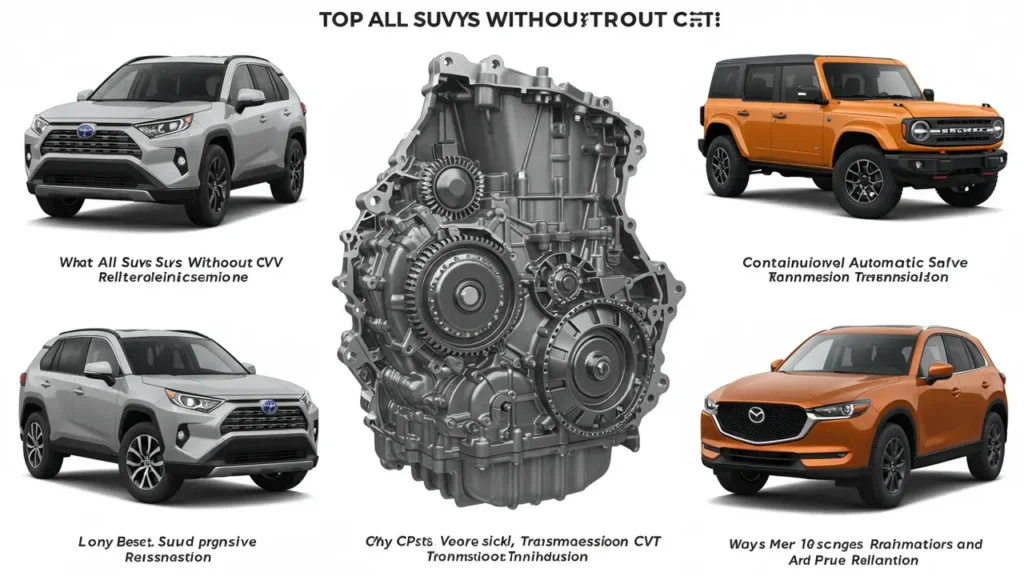
Advantages of SUVs with Traditional Automatic Transmissions
SUVs with traditional automatic transmissions remain a top choice for those who prioritize reliability, performance, and durability. Unlike CVTs, these transmissions use fixed gears, providing better power delivery, smoother shifting, and a more engaging driving experience.
More Reliable Over Time
One of the biggest reasons drivers prefer these transmissions is long-term reliability. Traditional automatics are built with stronger internal components, such as torque converters and planetary gears, designed to handle stress without excessive wear. Many SUVs, like the Jeep Wrangler and Ford Bronco, use them specifically because they hold up well under tough conditions. In contrast, CVTs often wear out faster, especially under high-stress use.
Better Towing and Off-Road Capability
For those who need an SUV for towing, a traditional automatic is the better option. Vehicles like the Toyota Highlander and Dodge Durango can pull heavier loads without overheating or excessive strain on the transmission. Off-road enthusiasts also benefit from better control on rough terrain, as automatics handle torque delivery more effectively than CVTs. This is why true off-road SUVs, such as the Jeep Wrangler and Ford Bronco, don’t use CVTs.
Improved Performance and Driving Feel
SUVs equipped with 8-speed or 10-speed automatics provide faster acceleration and smoother power delivery. Models like the Mazda CX-5 and Porsche Cayenne allow for precise shifts, making highway driving and overtaking much more responsive. Unlike CVTs, which often create a delayed throttle response, traditional automatics give immediate power when needed, making them more predictable in real-world driving situations.
Lower Maintenance and Repair Costs
Traditional automatics are easier and cheaper to maintain. Unlike CVTs, which rely on a belt-and-pulley system that can wear out quickly, conventional automatics use fluid pressure and mechanical gears that last longer. Regular fluid changes are usually enough to keep them running smoothly. When issues arise, repairs are often less expensive, as many traditional transmissions can be rebuilt rather than fully replaced, saving thousands in repair costs.
Fuel Efficiency Has Improved
A common argument for CVTs is fuel efficiency, but modern automatics have narrowed the gap. Vehicles like the Toyota RAV4 and Hyundai Tucson now use 8-speed transmissions, offering better fuel economy while maintaining strong performance. Advanced gear ratios allow for optimized fuel use, making traditional automatics just as efficient as CVTs in many cases.
The Best Balance of Durability and Performance
For buyers who prioritize long-term reliability, towing power, and a more engaging drive, traditional automatic SUVs remain the better choice. Whether for daily commutes, off-road adventures, or highway cruising, they provide a more durable and predictable driving experience.
List of the Best SUVs Without CVT Transmission
SUVs without CVT transmissions offer a better driving experience, stronger durability, and improved performance. Many manufacturers continue to use 6-speed, 8-speed, and 10-speed automatic transmissions in their most popular models. Below are some of the best options available across different categories.
Best Compact SUVs Without CVT
Toyota RAV4 (8-Speed Automatic) – A fuel-efficient and reliable SUV with a traditional automatic transmission. It delivers smooth shifting, good acceleration, and a well-built drivetrain.
Mazda CX-5 (6-Speed Automatic) – Offers sporty handling and a refined interior. The transmission provides precise shifts and works well with its responsive engine.
Hyundai Tucson (8-Speed Automatic) – Features modern tech and a comfortable ride. The 8-speed automatic ensures better power distribution compared to CVT-equipped rivals.
Best Midsize SUVs Without CVT
Toyota Highlander (8-Speed Automatic) – A family-friendly SUV with strong resale value. The transmission allows for better towing and acceleration compared to a CVT.
Honda Passport (9-Speed Automatic) – Delivers a strong V6 engine paired with a responsive transmission. The 9-speed automatic provides a smoother ride and better power management.
Chevrolet Equinox (6-Speed Automatic) – A practical SUV with a proven transmission that balances fuel economy and performance.
Best Off-Road SUVs Without CVT
Ford Bronco (10-Speed Automatic) – Designed for rugged terrain, its 10-speed transmission helps manage off-road conditions and highway driving efficiently.
Jeep Wrangler (8-Speed Automatic) – A legendary off-road SUV with a well-tuned automatic transmission. The 8-speed allows for strong low-end torque and better control on trails.
Toyota 4Runner (5-Speed Automatic) – A bit dated, but incredibly durable and reliable. The transmission is simple and built to last.
Best Luxury SUVs Without CVT
Porsche Cayenne (8-Speed Tiptronic Automatic) – A performance-focused SUV with a well-engineered transmission. It provides quick shifts and excellent acceleration.
Mercedes-Benz G-Class (9-Speed Automatic) – A premium off-road SUV with a refined transmission. Offers smooth highway cruising and off-road capability.
Best Full-Size SUVs Without CVT
Dodge Durango (8-Speed Automatic) – A powerful V8 SUV with a strong transmission, making it ideal for towing.
Ford Expedition (10-Speed Automatic) – A large family SUV with an efficient and durable automatic transmission.
Chevrolet Tahoe (10-Speed Automatic) – Offers strong performance and a traditional driving feel, ideal for long trips and heavy loads.
Traditional automatic SUVs continue to be a reliable choice for buyers looking for better durability, performance, and lower maintenance costs. Whether for city driving, off-roading, or highway cruising, these models offer the best alternatives to CVT-equipped SUVs.
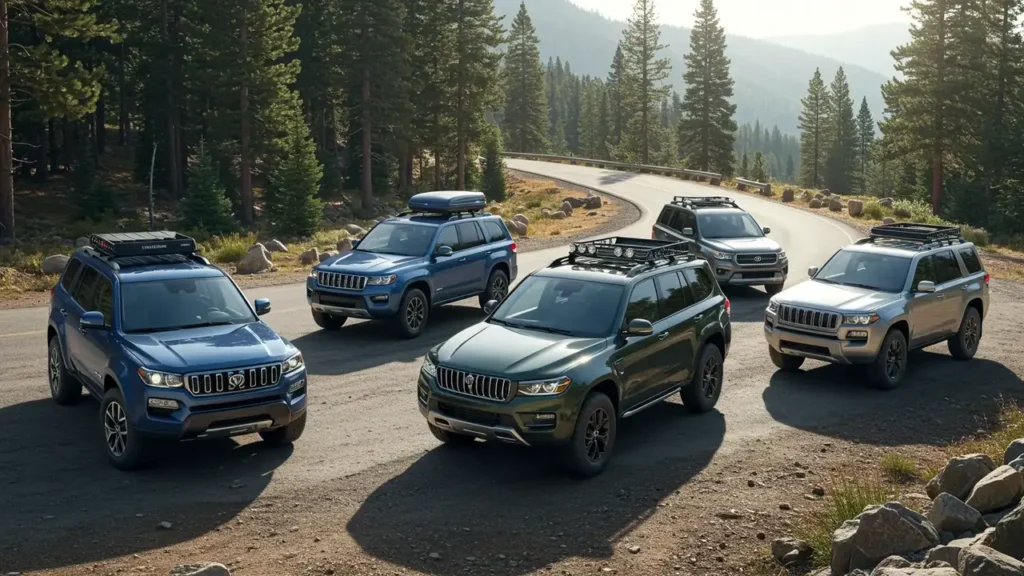
Best SUVs Without CVT Transmission
This comparison highlights the best SUVs with traditional automatic transmissions, focusing on transmission type, engine options, towing capacity, and the ideal use case for each model.
Compact SUVs
For those who prioritize fuel efficiency and daily driving, the Toyota RAV4, Mazda CX-5, and Hyundai Tucson stand out. The RAV4 features an 8-speed automatic paired with a 2.5L 4-cylinder engine, offering a balanced mix of efficiency and reliability. The Mazda CX-5, with its 6-speed automatic, delivers sportier handling, making it a great choice for those who enjoy a more responsive drive. The Hyundai Tucson, also equipped with an 8-speed automatic, focuses on tech features and comfort, making it an excellent city commuter.
Midsize SUVs
Midsize SUVs like the Toyota Highlander, Honda Passport, and Chevrolet Equinox provide stronger towing capacity and family-friendly features. The Highlander and Passport, both powered by 3.5L V6 engines, come with 8-speed and 9-speed automatic transmissions, respectively, making them ideal for long road trips and towing up to 5,000 lbs. The Chevrolet Equinox is more budget-friendly but still offers a reliable 6-speed automatic for daily driving.
Off-Road SUVs
For adventure seekers, the Ford Bronco, Jeep Wrangler, and Toyota 4Runner are some of the best options. The Ford Bronco is powered by either a 2.3L turbocharged 4-cylinder or a 2.7L/3.0L V6, mated to a 10-speed automatic that provides smooth power delivery across different terrains. The Jeep Wrangler, known for its legendary off-road capability, pairs a 3.6L V6 or a 2.0L turbocharged engine with an 8-speed automatic, ensuring excellent traction and control. The Toyota 4Runner, although using an older 5-speed automatic, is a proven workhorse that thrives in rugged conditions.
Luxury SUVs
Luxury models such as the Porsche Cayenne and Mercedes-Benz G-Class combine high-end features with performance-focused automatic transmissions. The Porsche Cayenne uses an 8-speed Tiptronic automatic, offering quick shifts and exceptional acceleration, while the Mercedes-Benz G-Class features a 9-speed automatic, delivering both off-road strength and highway refinement.
Full-Size SUVs
For those needing power and towing capability, the Dodge Durango, Ford Expedition, and Chevrolet Tahoe are top choices. The Durango, equipped with an 8-speed automatic, is a strong V8-powered SUV with a towing capacity of 8,700 lbs. The Ford Expedition and Chevrolet Tahoe, both featuring 10-speed automatic transmissions, are excellent for large families, road trips, and hauling heavy loads, with towing capacities exceeding 9,000 lbs.
| SUV Model | Transmission Type | Engine Options | Towing Capacity (lbs) | Best For |
| Toyota RAV4 | 8-Speed Automatic | 2.5L 4-Cyl | 3,500 | Fuel Efficiency, Reliability |
| Mazda CX-5 | 6-Speed Automatic | 2.5L 4-Cyl | 2,000 | Sporty Handling, Comfort |
| Hyundai Tucson | 8-Speed Automatic | 2.5L 4-Cyl | 2,000 | Tech Features, Daily Use |
| Toyota Highlander | 8-Speed Automatic | 3.5L V6 | 5,000 | Family SUV, Towing |
| Honda Passport | 9-Speed Automatic | 3.5L V6 | 5,000 | Spacious Interior, Highway Driving |
| Chevrolet Equinox | 6-Speed Automatic | 1.5L Turbo 4-Cyl | 1,500 | Affordable, Daily Use |
| Ford Bronco | 10-Speed Automatic | 2.3L Turbo 4-Cyl, 2.7L/3.0L V6 | 4,500 | Off-Roading, Adventure |
| Jeep Wrangler | 8-Speed Automatic | 3.6L V6, 2.0L Turbo 4-Cyl | 3,500 | Rock Crawling, Trail Driving |
| Toyota 4Runner | 5-Speed Automatic | 4.0L V6 | 5,000 | Durability, Long-Term Reliability |
| Porsche Cayenne | 8-Speed Tiptronic Auto | 3.0L Turbo V6, 4.0L V8 | 7,700 | Luxury, Performance |
| Mercedes G-Class | 9-Speed Automatic | 4.0L V8 | 7,000 | Luxury, Off-Road |
| Dodge Durango | 8-Speed Automatic | 3.6L V6, 5.7L V8 | 8,700 | Towing, Power |
| Ford Expedition | 10-Speed Automatic | 3.5L Turbo V6 | 9,300 | Large Families, Towing |
| Chevrolet Tahoe | 10-Speed Automatic | 5.3L V8, 6.2L V8 | 8,400 | Heavy-Duty Performance |
Factors to Consider When Buying an SUV Without CVT
Choosing an SUV with a traditional automatic transmission involves more than just avoiding a CVT. Several factors play a role in determining which model suits specific needs.
1. Transmission Type and Performance
Not all traditional automatics are the same. Most modern SUVs come with 6-speed, 8-speed, or 10-speed transmissions. A higher-speed transmission like a 10-speed automatic provides smoother shifts and better fuel efficiency, while a 6-speed automatic is often more durable and simpler to maintain. Vehicles like the Ford Bronco and Chevrolet Tahoe use 10-speed automatics, making them great for highway and off-road performance.
2. Engine and Power Output
The engine and transmission work together, so it’s important to choose a model with a well-matched powertrain. SUVs like the Mazda CX-5 and Hyundai Tucson use 4-cylinder engines, prioritizing fuel efficiency. Meanwhile, larger models like the Dodge Durango and Chevrolet Tahoe come with V6 and V8 engines, making them better for towing and heavy-duty use.
3. Towing Capacity and Utility
Towing capacity varies significantly between SUVs. If towing is a priority, a higher-output engine and a well-built automatic transmission are necessary. The Dodge Durango (8,700 lbs), Ford Expedition (9,300 lbs), and Chevrolet Tahoe (8,400 lbs) are top choices for hauling trailers, boats, or heavy cargo. Smaller SUVs like the Toyota RAV4 and Hyundai Tucson have lower towing capacities but offer better fuel economy for daily driving.
4. Reliability and Maintenance Costs
Traditional automatics are generally more reliable than CVTs, but some are built better than others. A proven transmission design, such as the ZF 8-speed automatic found in many high-end SUVs, is known for its long-term durability. Maintenance is also key—regular fluid changes help extend transmission life. SUVs with simpler automatic transmissions, like the Toyota 4Runner’s 5-speed automatic, tend to last the longest.
5. Fuel Economy vs. Driving Needs
Fuel efficiency depends on both the engine and transmission. Vehicles with higher-speed transmissions (like 8-speed and 10-speed automatics) tend to optimize fuel use better than older 5-speed or 6-speed versions. A Mazda CX-5 or Toyota RAV4 provides excellent mileage, while larger SUVs like the Dodge Durango and Ford Expedition prioritize power over fuel savings.
6. Off-Road or City Driving?
Some SUVs are built for off-road adventures, while others excel in city commuting. Models like the Ford Bronco, Jeep Wrangler, and Toyota 4Runner come with strong automatic transmissions and off-road capabilities, making them ideal for rugged terrain. On the other hand, SUVs like the Chevrolet Equinox, Honda Passport, and Hyundai Tucson offer a smoother, more fuel-efficient ride for daily urban driving.
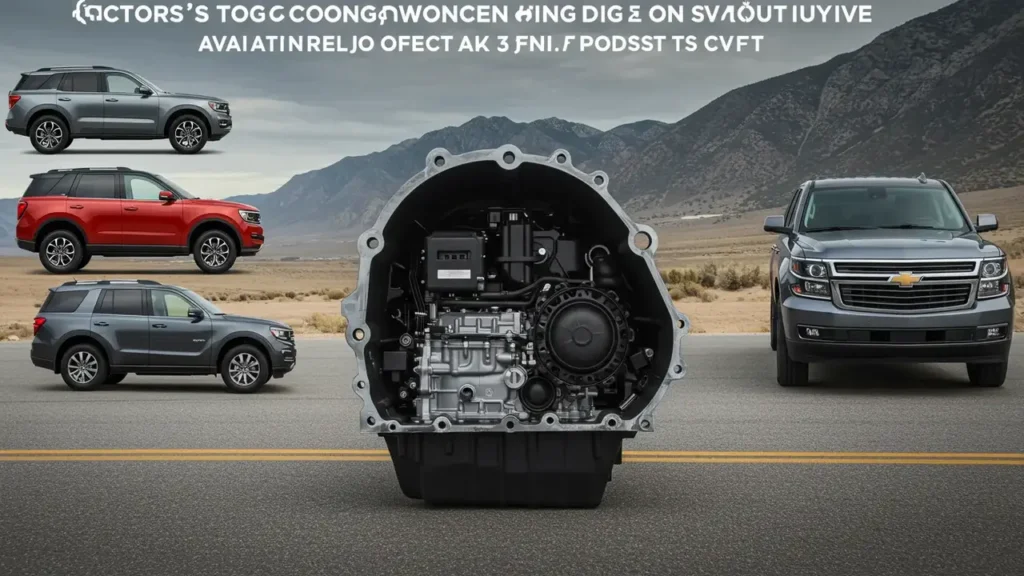
Conclusion
SUVs without CVT transmissions remain the best choice for those who prioritize reliability, performance, and durability. Whether it’s for daily commuting, off-road adventures, or towing heavy loads, a traditional 6-speed, 8-speed, or 10-speed automatic transmission offers better longevity and a more responsive driving experience.
For compact SUVs, the Toyota RAV4, Mazda CX-5, and Hyundai Tucson provide smooth shifts and great fuel efficiency. Midsize SUVs like the Toyota Highlander and Honda Passport balance power and practicality, while full-size models like the Ford Expedition and Chevrolet Tahoe handle heavy towing needs with ease. Off-road enthusiasts will find the Jeep Wrangler, Ford Bronco, and Toyota 4Runner better suited for rough terrains.
While CVTs are still common in many vehicles, traditional automatics remain the better choice for long-term reliability. Whether the priority is fuel efficiency, performance, or off-road capability, choosing an SUV with a well-built automatic transmission ensures a better ownership experience.
